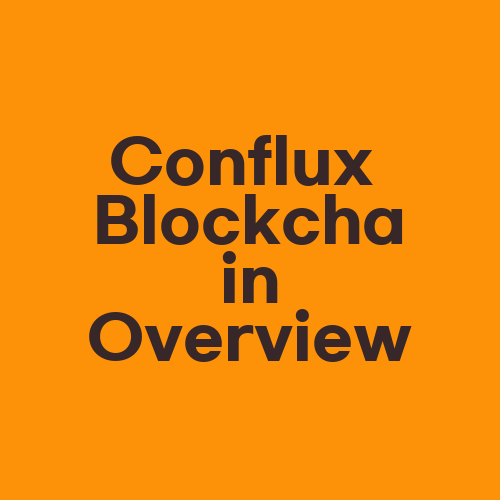Conflux Blockchain Overview

Conflux Blockchain Overview for Developers
Introduction
Conflux is a high-performance, censorship-resistant public blockchain that could transform the nature and speed of decentralized applications. Conflux has a unique architecture that combines a novel Tree-Graph consensus mechanism with sharding to create a blockchain that can achieve up to 3000 transactions per second (TPS) consistently. If you are a developer looking to create fast and efficient decentralized applications, then Conflux could be the ideal blockchain for you.
Conflux Architecture and Features
Conflux’s high level of transaction throughput is made possible by the unique architecture of its Tree-Graph consensus mechanism. Unlike traditional consensus methods, which rely on fixed block sizes, Conflux utilizes a more flexible approach in which multiple blocks can be generated at once and transactions can be confirmed before they’re included in the blockchain. This approach results in higher TPS speeds and enhanced scalability compared to other blockchains. Additionally, Conflux has several features that make it well-suited to the needs of developers including EVM compatibility, smart contract support, and a full developer toolkit.
Tree-Graph Consensus Mechanism
The Conflux blockchain uses a unique consensus mechanism called Tree-Graph that combines a directed acyclic graph (DAG) with a hierarchical set of trees. This allows for greater parallelism and consensus speed compared to traditional blockchains. The combination of Trees and Graphs ensures that the Conflux blockchain can perform well, even in situations where there is a low network density.
Flexible Transactions Confirmation Model
Conflux uses a flexible transaction confirmation model that allows transactions to be confirmed in real-time, rather than being pseudo-confirmed while waiting for a block to be incorporated. This results in an immutable blockchain while facilitating the speed of transaction confirmation. The approach of Conflux using GHOST and Cuckoo Rule sets is the novel way to mine the blockchain.
Sharding
Another essential feature of the Conflux blockchain is sharding. Sharding is a performance optimization technique that partitions the network into smaller, more manageable sections (shards). Each shard can process transactions in parallel, significantly increasing the network’s throughput and reducing congestion. With adequate computation power and fewer network nodes, Conflux is able to efficiently manage shards that enhances scalability.
Frequently Asked Questions
What programming language does Conflux support?
Conflux is EVM-compatible, which means it supports smart contract development using Solidity. It also supports other programming languages like Vyper and Rust, which are currently being developed for smart contracts on Ethereum.
How is Conflux different from other blockchains?
The major difference between Conflux and other blockchain systems is its Tree-Graph consensus mechanism, which makes block confirmation more efficient, and the sharding feature that partition the network to ensure high throughput and efficient resource utilization.
What is the Conflux developer toolkit?
The Conflux developer toolkit includes several tools that developers can use to build decentralized applications (dApps) on the blockchain, including Conflux Studio, a fully-featured IDE that helps you code, test, deploy and debug smart contracts on the Conflux blockchain.
Conclusion
Conflux is a high-performance, highly scalable blockchain that is uniquely suited to the needs of developers who want to create fast and efficient decentralized applications. Its unique Tree-Graph consensus mechanism, sharding feature, and full developer toolkit offer unparalleled speed and flexibility compared to other blockchains. If you are looking to create high-throughput decentralized applications, Conflux should be at the top of your list.
Useful Links:
– Official Website: https://confluxnetwork.org/
– Conflux Github Repository: https://github.com/Conflux-Chain
– Getting Started with Conflux: https://developer.conflux-chain.org/